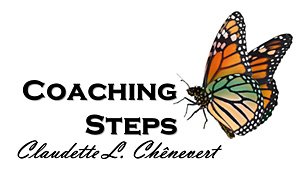With more than 4 decades of work with stepfamilies under her belt, psychotherapist Eleanor Spackman Alden offers fellow helping professionals guidelines for becoming effective healers, guides, and support systems in their practice with stepfamilies.
by Eleanor Spackman Alden
(Photo on home page © Claus Mikosch and courtesy of www.istockphoto.com)
Seldom is there a topic in the life of a therapist where the old-fashioned issue of countertransference—when the therapist projects his or her own feelings or wishes onto the client—can resonate so strongly. Therapists who value stepfamily life—and honor and respect the courageous people in stepfamilies—have an attitude that, in itself, is healing. In addition, those therapists who view stepfamilies as second rate or “even worse” than single-parent families will negatively impact the therapeutic outcome. If an unexamined life is not worth living, then, as a therapist, an unexamined attitude toward stepfamilies is a red flag to “refer to others”! To work well with stepfamilies, a therapist needs to value them and to know the differences and similarities among good parenting, good co-parenting, and good stepparenting.
Working with stepfamilies can be complex, complicated, challenging, and immensely rewarding. Family therapists who have a strong background in family systems theory will find their education to be immensely helpful in their practice. Yet, work with stepfamilies requires more than what the therapist learned in most family theory courses and training.
Stepfamilies Are More Than Just ‘Standard’
Unfortunately, the therapeutic community has often supported a negative image of stepfamilies. Perhaps this bias stems from a lack of the specialized knowledge and skills required to handle the more complicated stepfamily situation. Frustrated therapists may end up blaming the client’s illness for the lack of therapeutic success. Moreover, the majority of stepfamily members never enter therapy, and when they do, they frequently pass themselves off as “standard” families without “step” relationships, so the issues unique to stepfamily life may be overlooked by the analyst. With just a few added skills and knowledge, a therapist working with stepfamilies can be just as successful as in their work with any other family.
Given the sheer number of people in all cultures who are impacted by stepfamily relationships, it is hard to imagine that any therapeutic practice exists without stepfamily members somewhere among the majority of its clients. Issues of “step” may not be the presenting ones, but the underlying attitude toward stepfamilies can support or damage any therapeutic alliance around any topic. Too often the words and tone of voice convey a therapist’s negative bias toward stepfamilies, stepchildren, and blended families. A demeaning and patronizing attitude is not a predictor of a good outcome for successful therapy.
Take the case of “Anne,” who was in analysis because of her struggle with her negative self-image and problems with men. After working with her analyst for nearly 6 months, she overheard her therapist talking to a colleague about a celebrity who was marrying once again. The disdain and contempt the analyst held for divorce and stepfamilies came through loud and clear to Anne, who was divorced. That bias ruined the therapeutic container, and Anne left therapy several months later—enraged with her analyst and severely depressed.
How to Maximize a Successful Therapeutic Outcome
Therapeutic work with stepfamilies can be, but is not always, more complicated than with a so-called standard family in which no divorces or former spouses exist. Stepfamilies often have special needs in terms of mediation between coparents regarding goals, finances, visitation, and the development of a cooperative system. Such needs are seldom the case in non–stepfamilies.
To meet the unique needs of stepfamilies and to help maximize a successful outcome, therapists might take the following actions.
Emphasize the Gifts Stepfamilies Bring to Adults and Children Alike
- Stepfamilies provide wonderful opportunities to exercise compassion, empathy, and the ability to put oneself in someone else’s shoes.
- Stepfamilies often provide a structure in which everyone can grow and learn to be flexible and accepting of different opinions, values, and goals.
- Stepfamily members demand that other members learn to listen deeply to each other.
- Work with stepfamilies can lead to increased skills in self-soothing, learning to choose appropriate behaviors when emotions are running high, and learning diplomacy skills, which are highly valued by society.
- Stepfamily structures provide the potential for children to feel loved and supported by different adults. Stepfamilies also offer a backup system for cooperative adults to enjoy time with their children and also have time alone as a couple.
- A long-standing part of all cultures, stepfamilies have produced some of our most outstanding leaders and innovators of change: Moses, George Washington, King Arthur, a number of U.S. presidents, Queen Elizabeth I, and Marie Curie. Role models for step-relationships are in abundance.
Watch the Language!
Therapists can unintentionally emphasize demeaning perspectives through their use of language. However, therapy is a perfect venue for reframing society’s negative view and accentuating the potential for a positive outcome while empathizing with the challenges.
- When referring to the divorced parents of a child, use the word coparent. Furthermore, keep in mind that referring to the former spouse as the ex-wife or ex-husband can harm the therapeutic process—if the goal is cooperative parenting—because those terms emphasize loss.
- The term ex-spouse may be an accurate description when working with a divorced couple who have no children and no love left. Consider dating terminology: Most of us see more warmth in descriptions such as former boyfriend, last boyfriend, and old boy friend than in ex-boyfriend. The same thinking applies to terminology for former spouses.
- Terms such as failed marriage or a broken home carry negative emotional energy. Discourage terms that imply divorce is a failure. Marriages may break, but homes grow, change, expand, and contract. When a divorce occurs, one home usually becomes two. Using the term two homes—the one with mom and the one with dad—lessens the sense many have that divorce equals loss.
Therapists must examine their own beliefs about divorce. When is divorce a spiritual path that is important for all? When is staying for “the sake of the children” is a good idea? When is it not? Therapists who guide children to see the abundance in a situation involving two homes, four parents, two birthdays, two Thanksgivings, and double doses of good things are helping stepfamilies make the best of their situation and its opportunities. Emphasizing what is in abundance in stepfamilies, yet also being honest about the scarcities, and then developing strategies and coping skills to deal with identified scarcities can be truly rewarding for both therapist and family, as well as a bonding experience for the stepfamily.
- Love is a tricky word, and a discussion about the different kinds of love may be imperative. In Sanskrit, the English word love translates into 95 different words. In English we talk about loving sunsets, loving our spouses, loving ice cream, and loving our children, yet other cultures may find our use of the same word to describe feelings of affection toward a spouse and a child repugnant.
When working with stepfamilies, it is often a huge relief to talk about the differences in how people love each other. Loving a biological child is not the same feeling as loving a stepchild, let alone loving a spouse or a hamburger! It is neither equal nor the same, but it still is immensely valuable—different but not less important.
Children need many kinds of conditional love. The rest of society tends to be conditional in its acceptance and support, so an opportunity to have the less biased guidance of a stepparent regarding the confusing social world outside the home can be wonderful. A stepparent’s conditions that are too harsh, unreasonable, or inappropriate are destructive. In contrast, if those conditions encourage the child to achieve skills and behaviors that will make that child successful in society, then the conditions are valuable and just as needed as the less conditional love of a biological parent.
It is okay for a stepparent to feel differently about their stepchildren, and to love them differently. A therapist can examine the behavior of treating people as fairly as possible without the often extreme guilt and anger induced by the common accusations that “you don’t love my kids as much as your own.” Children and adults are often in situations in which they are not “loved as much as” another person, and fair treatment is still demanded.
- Fathers and mothers almost always walk through a divorce with guilt about “what it is doing to the children.” Other family members experience grief about the loss of the marriage relationships, the original family structure, and the relationships that supported such structure. When hearing expressions of guilt or grief, deal with those feelings openly.
At times in my own practice, I have asked a young person about missing his or her biological parent in front of a stepparent. The child’s answer plus the facial expressions of everyone in the room reflect how taboo that kind of honesty has or has not become. Giving the child permission to feel okay about missing Dad when Mom and Stepdad are there helps that child to eventually feel fine about missing his or her stepparent. What a gift to love so many people! Hearing children talk about missing their absent parent may be painful for parent and stepparent alike, but empathy and support for such feelings is more healing than denial, anger, or guilt. If feelings result in bad choices about how to behave, it is imperative that the therapist accept the feelings while examining associated beliefs and how to make better choices behaviorally.
- “Trash talk” by adults about other family members harms everyone, and the person dealing out the negative, hostile talk is often one who, in the long run, will most likely be rejected by the children as they grow older. Therapists must actively discourage any attempt to align children against their biological parent and must encourage respectful communication among all parental figures. This does not mean the therapist should minimize real-life problems, however. For example, if the biological father is an alcoholic, acknowledging that “Dad loves you, but Dad has a disease” is more helpful and less harmful than implying “Dad is a bad person and does not love you.”
It is okay to validate a child’s experience, especially when that experience is painful, but the validation must be done without attacking the other parent. The therapist might encourage one parent to say, for instance, “Your mother, at times, gets very angry when her feelings are hurt, and then she says things she probably will wish she had not said later on. I know it hurt you to have to listen to that tirade, and I am glad you can talk about it. I hope you know we all love you and will do what we can to make this different, or at least protect you when we can.” If the other parent truly is so ill, addicted, violent, or sexually abusive that he or she is a danger to the child, and the child must physically be protected from that parent, then acknowledging the illness so that the child does not feel that half of his or her own identity is flawed, evil, or unlovable is critical. A child has a right to love a flawed parent.
Stepfamilies excel at teaching the spiritual and life lesson that love is not a scarce commodity. The more we love, the more there is, and the more comes back to us. It is even possible to love two people when one hates the other!
- It is essential that therapists acknowledge the prejudice with which stepfamilies are often treated. Police, court evaluators, counselors, ministers, coaches, and many others often treat the best of stepparents as if they were invisible, under suspicion immediately, or in a patronizing fashion, as if their love and caring was invalid or second rate. In addition, school professionals often are restricted in their ability to include stepparents in conferences and decisions. In my book StepWisdom: Knowledge from the Ages for Successful Stepfamilies, I describe one case in which the stepmother, the primary person who helped the children with homework, was banned from all parent–teacher conferences. Dismissing this difficulty or encouraging an aggressive stance or dialogue would, in the long run, have served no one. Instead, mediation and empathy for all parties involved allowed the relationships between the coparents to grow, and the children continued to be successful students.
- A “Five-to-One Rule” for adults and children is an effective way to encourage compliments. No one can say anything critical about anyone else without first having five compliments in the emotional bank account. You can withdraw from that account with respectful criticisms only if you already have something in the account. If you can’t think of anything nice to say, then you must stay quiet and contemplate five reasons why you have any “right” to criticize. If you can’t think of anything you like about another family member, then that needs examining.
This rule is helpful for a number of reasons:
- Most people want to be accurately heard and their criticisms taken seriously. But if all a person does is criticize, even if only half of the time, the audience may view that person’s comments as trivial.
- Parents who want their co-parent to honor their wishes, value their opinions, and treat their new marriage and role as a parent with dignity will find the Five-to-One Rule to be effective.
- Those in a stepfamily who cannot think of one thing good to say about any of its members may need to rethink their commitment to the family.
Over the past decades, having supervised therapists working with stepfamilies has certainly deepened my belief that stepfamilies can be successful, loving, dynamic, and creative families. Therapists: Being aware of your own myths about stepfamily and divorce and recognizing personal biases and prejudice will aid you on your path to becoming an effective healer, guide, and provider of support for stepfamilies. Yes, stepfamilies can be challenging work for therapists, but the rewards—as with anything that demands our best skills—can be great.
Eleanor Spackman Alden, LCSW, BSD, is psychotherapist who, for more than 40 years, has helped stepfamilies and those going through divorce navigate painful or difficult transitions. Author of the recently published StepWisdom: Knowledge From the Ages for Successful Stepfamilies (Wheatmark), one of her main interests is changing the paradigm about how our culture views stepfamilies. You can read more about Eleanor, who resides southwest of Denver, Colorado, at http://www.stepwisdom.com.



 This is not your mother’s second wedding! Getting married again? Wondering why the planning is harder than you thought it was going to be? Enter to win a copy of Eat, Drink and Remarry by Stacey Tucker!
This is not your mother’s second wedding! Getting married again? Wondering why the planning is harder than you thought it was going to be? Enter to win a copy of Eat, Drink and Remarry by Stacey Tucker!


Comments